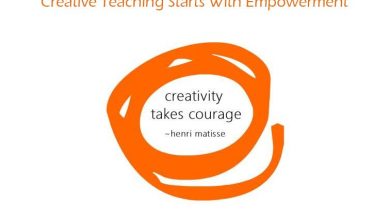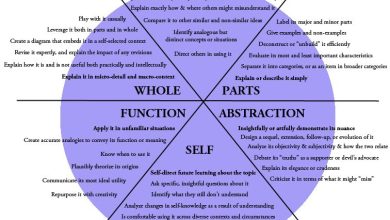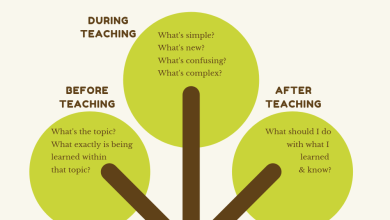Accessing New Generation AI-Based Authoring Tools – TeachThought
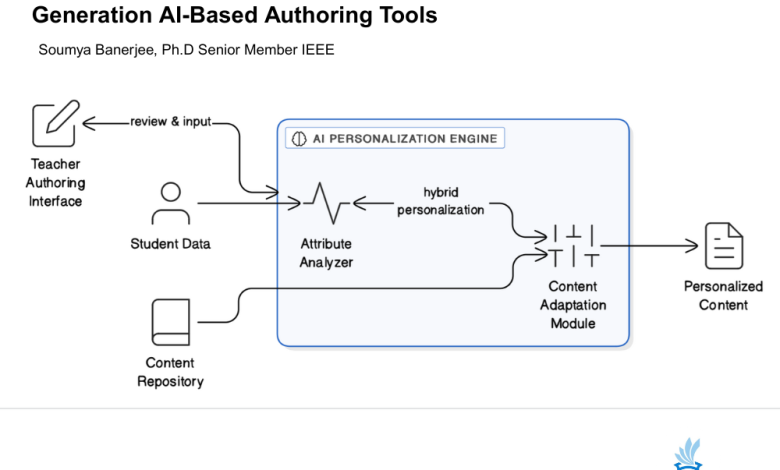
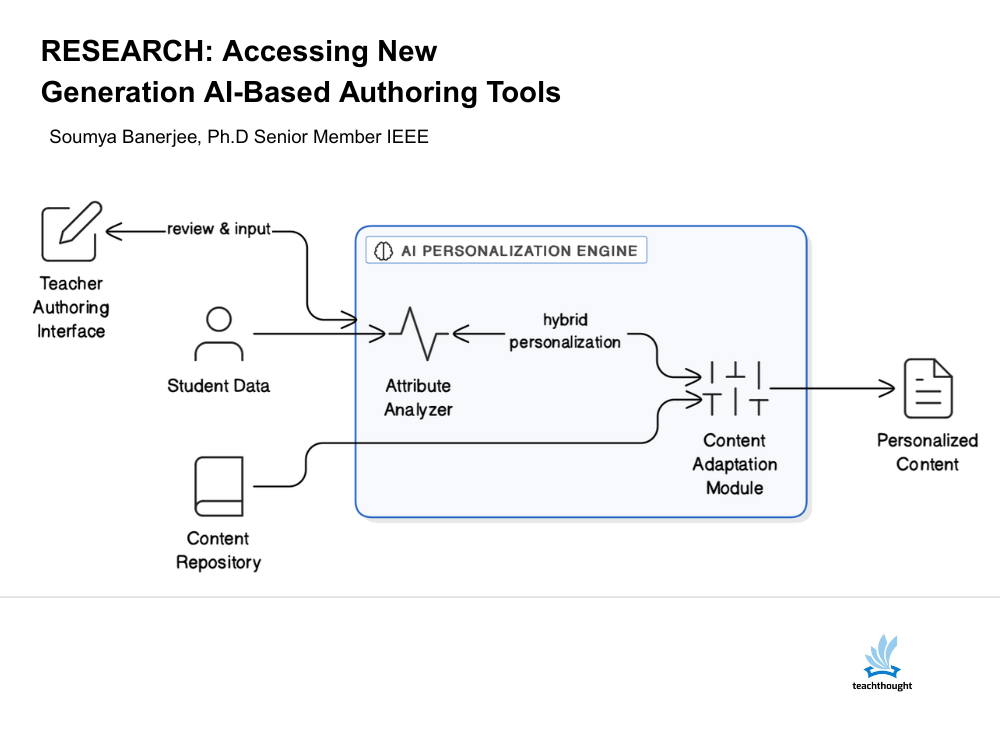
Ex. Associate Professor, Dept. Of Computer Science & Engg., Birla Institute of Technology
[email protected]

Major Highlights
This article investigates on-going trends of AI based authoring tools in the context of Large Language Model and analyzes how far it is helping the higher education to cater the personal choice, learning habits and emotional need of the students.
The article also scrutinizes different factors that influence to design a decent AI based learning and authoring tool
Finally, the article presents the expected version of next generation authoring tool, which will be closer and more realistic to follow attitude and aptitude of the students.
Prologue
The academic sphere has experienced a flourishing growth in artificial intelligence (AI)and related verticals. This expansion has accelerated to the development of sophisticated tools/applications designed to foster prompts and follow-ups essential for conducting day to day academic targets including content creation endeavors, generating diversified simulation scenarios, examples, quizzes and finally to shape up the destination knowledge for the students.
The impact of such AI driven authoring tools have become phenomenal in engineering education, where the practical behavioral or cognitive attributes of the learners play crucial role; Specifically , the support to tune with the impetus and diversified mental wisdom of leaners; it is arguable to justify how far and to what extent, AI based authoring tool could enrich the cognitive upliftment of the learners.
The objective of the engineering education is not only to completion of reunited curriculum: In addition to, it is mandatory to generate more curious minds within the engineering pedagogy itself. This article will investigate both sides of AI improvisations in content creation and authoring for conventional teaching purposes.
The remaining parts of the article has been organized as follows: section 2 describes the different artifacts on AI based authoring tools, followed by an analytical and performance based perspectives on leading applications in this realm of authoring tools in section 3.1.Section 4 highlights and discusses the importance of distinguished cognitive abilities of learners with respect to the different AI based authoring tools.
Finally, in section 5, the possible and expected futuristics augmentations in AI based authoring tools have been coined to create more realistic benefit for knowledge enrichment of learners not being restricted with content creations. This vertical could play in significant impact specifically with wider deplorability of different language models in authoring.
2. Essential Facts on AI driven Authoring tools
By definition, e-learning authoring tools are defined as software applications, which are used to create digital training content such as academic courses, quizzes, relevant simulations for demonstrations and subsequent valuation of learners. Authoring tools broadly foster instructional designers and educators build interactive, enriched multimedia learning experiences—seldom bypassing complex coding acumen. Hence, content can be delivered through an LMS or shared directly with learners [3].
The essential AI features to orchestrate the conventional e-leaning are identified as:
- AI author assistance
- Dynamic content creation
- Content document rendering
- Content analytics and insights
Considering the high-level description of AI based authoring tool, we refer different content generation algorithms like [19] Procedural Content Generation or PCG, [3] QuillBot – AI-powered paraphrasing and summarization. However, the specific AI feature like Content document rendering, there are several recent breakthroughs on Document Parsing system and document layout analysis (DLA) [4]. In summary:
- Natural Language Processing (NLP): AI-powered writing assistants generate articles, blogs, and reports, optimizing workflow efficiency.
- Machine Learning (ML): ML algorithms analyze data trends, aiding in personalized content recommendations and targeted marketing.
- Content Curation Systems: AI filters and curates content based on user behavior, enhancing engagement.
- Image Recognition: AI detects and categorizes images, streamlining content creation in digital marketing and design.
- Voice Recognition: AI-powered transcription and voice assistants assist content creators in automation.
Table 1. Comparative Features of Existing AI based Authoring tools
| AI based Authoring (Tool) | Essential Features on AI / Dynamic Content Creation | Content Document rendering | Content Analytics & Insight | Racing for & limits too / Notes |
|---|---|---|---|---|
| LearnWorlds | Generates course outlines and evaluates assessments. AI assists with quizzes, exams, and assessments through interactive videos, form-based assessments, and customizable learning activities. | SCORM / HTML5 support with easy importing | AI Insights for course enrollment, learner progress analytics | Free trials Mostly for educators. Not a standalone authoring tool |
| Kajabi | Generates course outlines and content. AI generates course content but mainly for marketing | Not compliant with SCORM or xAPI | Standard analytics, no AI support | Online creators monetizing content |
| Adobe Captivate | Clean UI with advanced customization and capable of doing technical and scenario-based training | SCORM, xAPI, and mobile-ready content | Standard Analytics, no AI support | Steep learning curve for beginners & runs slow on lower-spec machines |
| Mexty | Generates e-learning Course contents, microlearning modules main blocks with stylized templates, including interactive gamified assessment and simulation. Versatile content generations with both academics, student research and assignment purposes | Export as LMS Package (SCORM, xAPI, cmi5) or Web HTML | Mexty LMS, monitor completions, scores, and time spent. Optimize based on real learner data | Promising cognitive and predictable personalized coverage AI based Authoring application |
| Lectora Online | Cloud-based authoring software known for enterprise training. Fine-grained control over course logic, layout, and content flow. It also integrates with tools like Camtasia and Snagit, if to include screencasts and annotated visuals. | Compatible with most major LMSs | Normal analytics available | Responsive and mobile-ready. but with steeper learning curve |
| Cognispark | Transforming Ideas into Interactive Learning with generative AI. It enables educators, L&D teams, and businesses to build interactive courses | SCORM, xAPI, and HTML5 support. | Not prominently supported. | Multi-user access, review tools, cloud-based storage but limited customization |
4. Cognitive Attribute of Students: Potential Impact in AI based Authoring
Cognition, as the rudimentary ability of individuals, through which humans understand, process, and apply information [1]. Since the inception of educational psychology, it has been well realized that cognitive ability and traits of learners highly impress the designing of educational pedagogy and content generation [2]. Higher order cognitive ability e.g. creativity and critical thinking carry a dominating impact while we will be talking about AI based authoring.
We identify, recently (2025) few interesting points during the investigation of the family AI driven authoring tools [18]:
Personal characteristics can generally be categorized into two major groups:
- Demographic characteristics
- Students’ spontaneous state
Demographic characteristics related to cognitive ability include gender, nationality, race, age, etc. [13], while students’ spontaneous state is related to students’ self-efficacy [14], learning habits [15], and emotional needs [16], etc.
- Origin and background of the learner
- Growth experience
Growth experiences are ideally segregated into two key areas: educational exposure and social-environmental Interactions. These both factors improvise an individual’s psychological and intellectual upliftment towards academic pursuit. Hence, the present design of precise AI based authoring application must comprehend these cognitive learning attributes with increasingly emphasis on the personalized and easier learning curves.
Figure 1. Futuristic version of Cognitive and personalized AI based authoring tool
The more analysis of student personal and data towards AI based authoring tool (Refer Figure 1) provides more flexible personalization of cognitive attributes(like as self-efficacy, learning habits, and emotional needs) into the authoring applications; several recent breakthroughs from many promising and young enterprises are available in this paradigm, principally Cognispark, Articulate Storyline 360, Mexty are one of them in the race. However, cost optimization and compatibility with other LMS platform could be a challenge while integrating the cognitive attributes of the students in the design of the algorithm (Table 1).
5. Future Scenario of AI based Authoring
With plethora of AI driven authoring tools operational in the academic domain, analytically authenticity and quality of content always been a concern with respect to the reliability. For example, to generate any engineering academic content, the precision and updated version of the content becomes most essential aspect. Therefore, fact-checking procedures and human intervention is mandatory to fine-tune the accuracy and relevance of AI-generated content. Sometimes, both generative and agentic AI lacks contextual awareness and suffers from nuance, sarcasm, or subjectivity in writing. To address this issue, hybrid approach like Reinforcement Learning from human Feedback (RLHF) [5] [6] [7], where AI generates initial drafts, but human editors review and refine content to ensure correctness and consistency. Reinforcement learning (RL) techniques train software to make decisions that maximize rewards, making their outcomes more accurate. RLHF incorporates human feedback in the rewards function, so the ML model can perform tasks more aligned with human goals, wants, and needs. RLHF is used throughout generative artificial intelligence (Generative AI) applications, including in large language models (LLM) [20]. The appropriate collaborative approach of AI algorithms with human intervention and understanding the cognitive outset and personalization of the learners’ choice should be the focus of developing next generation of AI based authoring.
Secondly, most of the AI algorithms deployed for AI based authoring tools prone to be biased [8][9]. This is simply because AI models are trained on large and diversified corpus of datasets, and if these datasets contain biases, the AI-generated content may reflect and even amplify them. This will also ignore the cognitive and grasping features of learning while helping them. The end-result could be more digitally vulnerable, even the AI based authoring tool will appear more monotonous and isolated from the learner ’mind-set compared to conventional classroom teaching. Hence, AI authored content should be audited continuously to mitigate the data bias issue irrespective of the different cognitive requirement of the learners.
It has been argued considerably that AI based writing tools always relinquish the human creativity while engrossing into the automation process. In this context, the term Human-AI Co-Creativity [10] has been coined and thus excessive dependence on AI could undermine the unique aspects of human creativity, such as emotional depth, moral reasoning, and contextual awareness. The futuristic authoring tool should align and balance the creativity part with necessary automation. This alignment and synergy should also encompass the suitable content generation, and simulation based on the diversified abilities of learners to follow it instead of relying only on the single “prompt”.
The inclusion of game authoring in the different levels of content creation might be impactful since the e-learning has been incepted; it may yield more complexity of software application to embed correct gaming synchronization in the AI based authoring, still it will be a novel approach.
Takeaways & Conclusion
The essence of this article analytically summarizes the detailed artifacts AI based authoring tools, relevance of cognitive features of learners and necessary scope of integrations with a feasible future version of Authoring tool. The article also presents a comprehensive comparison on several existing and young promising AI based authoring tools. In tune of cognitive boon, the future of AI driven authoring tool seems very much phenomenal if and only if the different personalized cognitive abilities of the learner could be well mapped.
References
[1]. Baker, D. P. et al. The cognitive impact of the education revolution: A possible cause of the Flynn Effect on population IQ, Intelligence, 49, 144–158 https://doi.org/10.1016/j.intell.2015.01.003 ,2015.
[2]. Gunasekara, S. & Saarela, M. Explainable AI in education: techniques and qualitative assessment. Appl Sci.2025.
[3]. Ahmed, A. A. A., & Ganapathy, A. Creation of automated content with embedded artificial intelligence: a study on learning management system for educational entrepreneurship. Academy of Entrepreneurship Journal, 27(3), pp.1-10, 2021.
[4]. Ayan Banerjee, Sanket Biswas, Josep Lladós, and Umapada Pal. Semidocseg: harnessing semi-supervised learning for document layout analysis. International Journal on Document Analysis and Recognition (IJDAR), pages 1–18, 2024.
[5]. Liang, H., Yang, L., Cheng, H., Tu, W., & Xu, M. Human-in-the-loop reinforcement learning. In: In 2017 Chinese automation congress (cac)., pp.4511–4518, 2017. https://doi.org/10.1109/CAC.2017.8243575.
[6]. Lambert, N., Castricato, L.,von Werra, L., & Havrilla, A. Illustrating Reinforcement Learning from Human Feedback (RLHF). Hugging Face Blog 2022.
[7]. Altmann PRitz FZorn MKölle MPhan TGabor TLinnhoff-Popien C Discriminative reward co-training Neural Computing and Applications 10.1007/s00521-024-10512-837:23(18793-18809),2025.
[8]. Nyembo Mpampi, A. Bias in Content-Generating AI Algorithms: Technical Analysis, Detection, And Mitigation with Python. International Journal Of Mathematics And Computer Research, 13(4), pp.5087-5095, 2025.
[9]. Matthew G. Hanna, Liron Pantanowitz, Brian Jackson, Octavia Palmer, Shyam Visweswaran, Joshua Pantanowitz, Mustafa Deebajah, Hooman H. Rashidi, Ethical and Bias Considerations in Artificial Intelligence/Machine Learning, Modern Pathology, Volume 38, Issue 3, 2025.
[10]. Haase, Jennifer, and Sebastian Pokutta. “Human-AI co-creativity: Exploring synergies across levels of creative collaboration. https://arxiv.org/pdf/2411.12527v2 , 2024.
[11]. Cristea, A.: Authoring of adaptive educational Hypermedia. In: Seventh IEEE Internation- al Conference on Advanced Learning Technologies ICALT 2007, pp. 943–944, 2007.
[12]. Sharp, D. et al. Education and cognitive development: the evidence from experimental research. Monogr. Soc. Res. Child Dev. 44, (1/2), 1–112. https://doi.org/10.2307/3181586 (1979).
[13]. Brandt, N. D., Lechner, C. M., Tetzner, J. & Rammstedt, B. Personality, cognitive ability, and academic performance: differential associations across school subjects and school tracks. J. Pers. 88 (2), 249–265. https://doi.org/10.1111/jopy.12482 (2020).
[14]. Li, Z. & Qiu, Z. How does family background affect children’s educational achievement? Evidence from contemporary China. J. Chin. Sociol. 5 (1), 1–21. https://doi.org/10.1186/s40711-018-0083-8 , 2018.
[15]. Iqbal, J., Asghar, M. Z., Ashraf, M. A. & Yi, X. The impacts of emotional intelligence on students’ study habits in blended learning environments: the mediating role of cognitive engagement during COVID-19. Behav. Sci. 12 (1), 14, 2022.
[16]. Jansen, K. & Kiefer, S. M. Understanding brain development: investing in young adolescents’ cognitive and social-emotional development. Middle School J. 51 (4), 18–25. https://doi.org/10.1080/00940771.2020.1787749 (2020).
[17]. Sharma, S. & Gupta, B. Investigating the role of technostress, cognitive appraisal and coping strategies on students’ learning performance in higher education: a multidimensional transactional theory of stress approach. Inform. Technol. People. 36 (2), 626–660. https://doi.org/10.1108/itp-06-2021-0505 (2023).
[18]. Niu T, Liu T, Luo YT, Pang PC, Huang S, Xiang A. Decoding student cognitive abilities: a comparative study of explainable AI algorithms in educational data mining. Sci Rep. 2025 Jul 24;15(1):26862.
[19]. Maleki, Mahdi Farrokhi, and Richard Zhao. “Procedural content generation in games: A survey with insights on emerging llm integration.” Proceedings of the AAAI Conference on Artificial Intelligence and Interactive Digital Entertainment. Vol. 20. No. 1. 2024.
[20]. A.Ahmadian,C.Cremer,M.Galle ́,M.Fadaee,J.Kreutzer,O.Pietquin, A. U ̈stun, and S. Hooker, Back to basics: Revisiting reinforce style optimization for learning from human feedback in llms, arXiv preprint arXiv:2402.14740, 2024.


